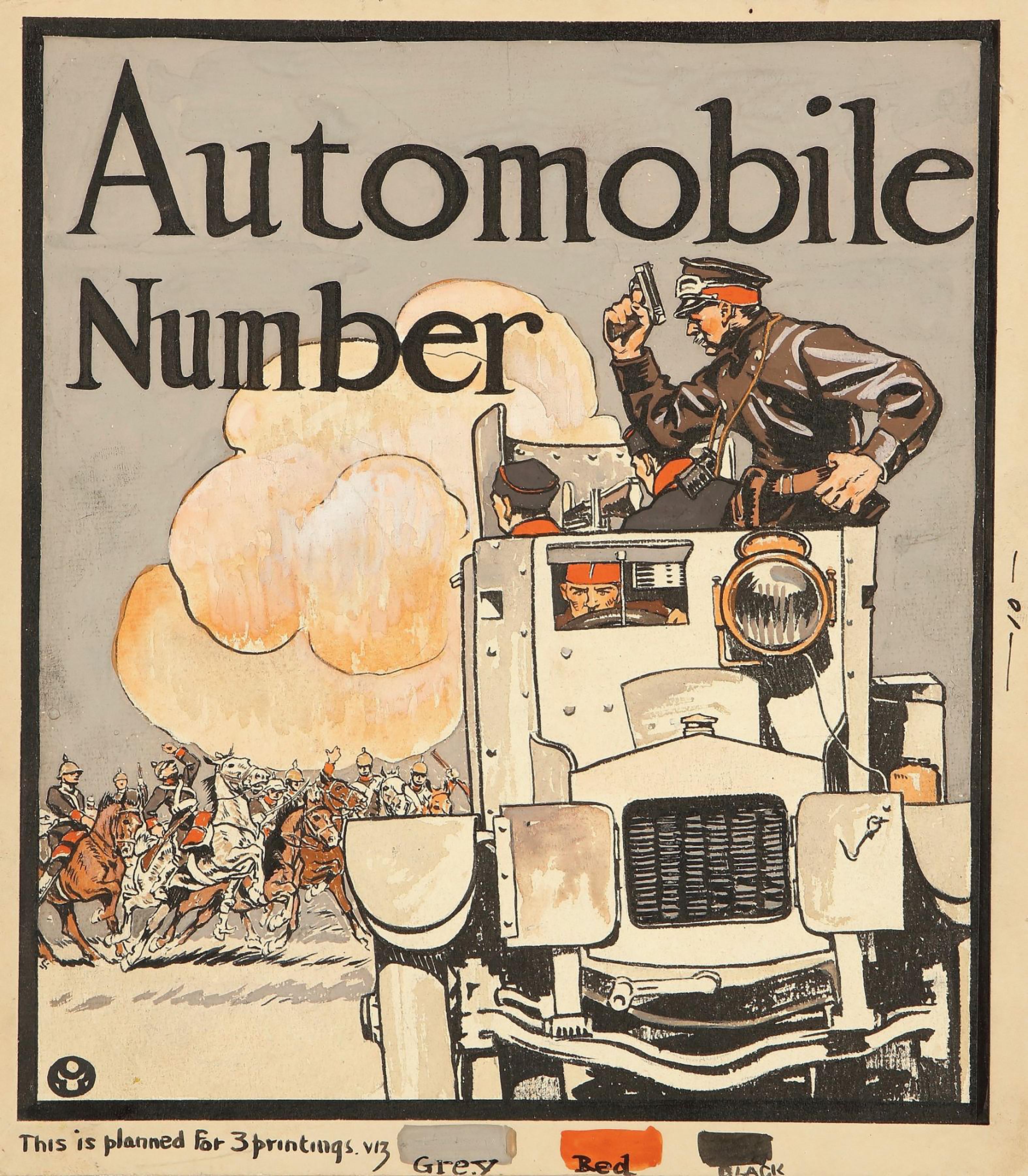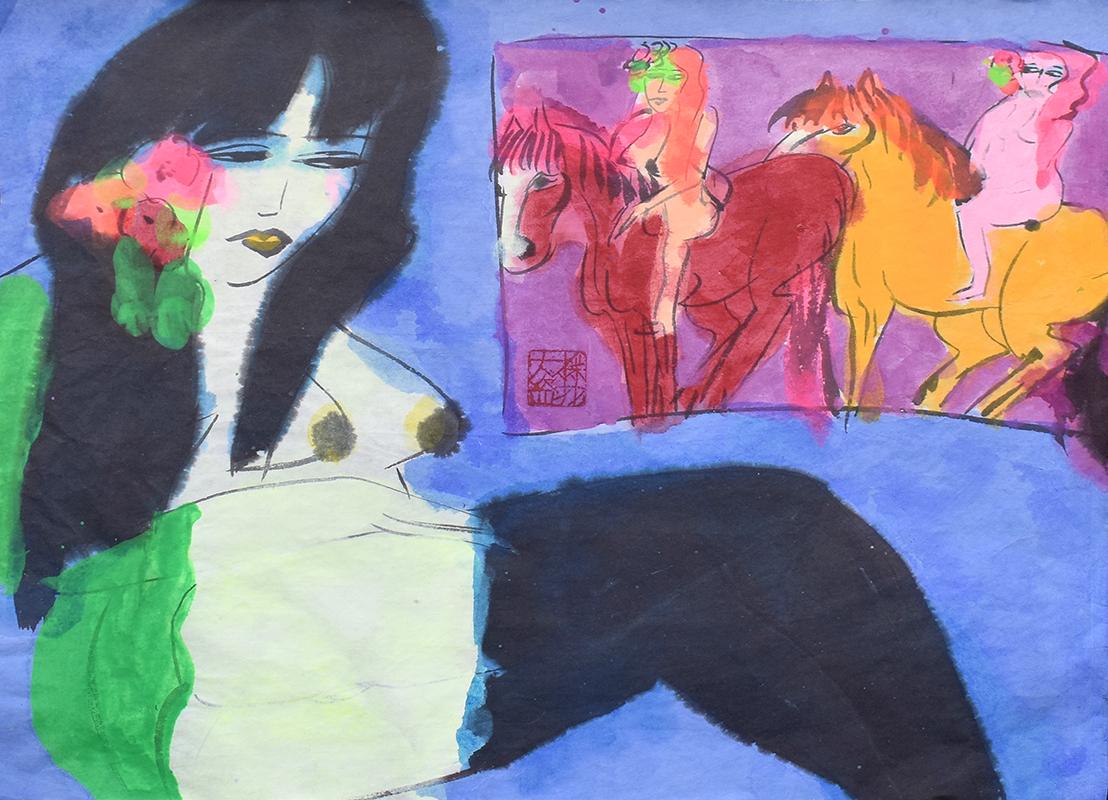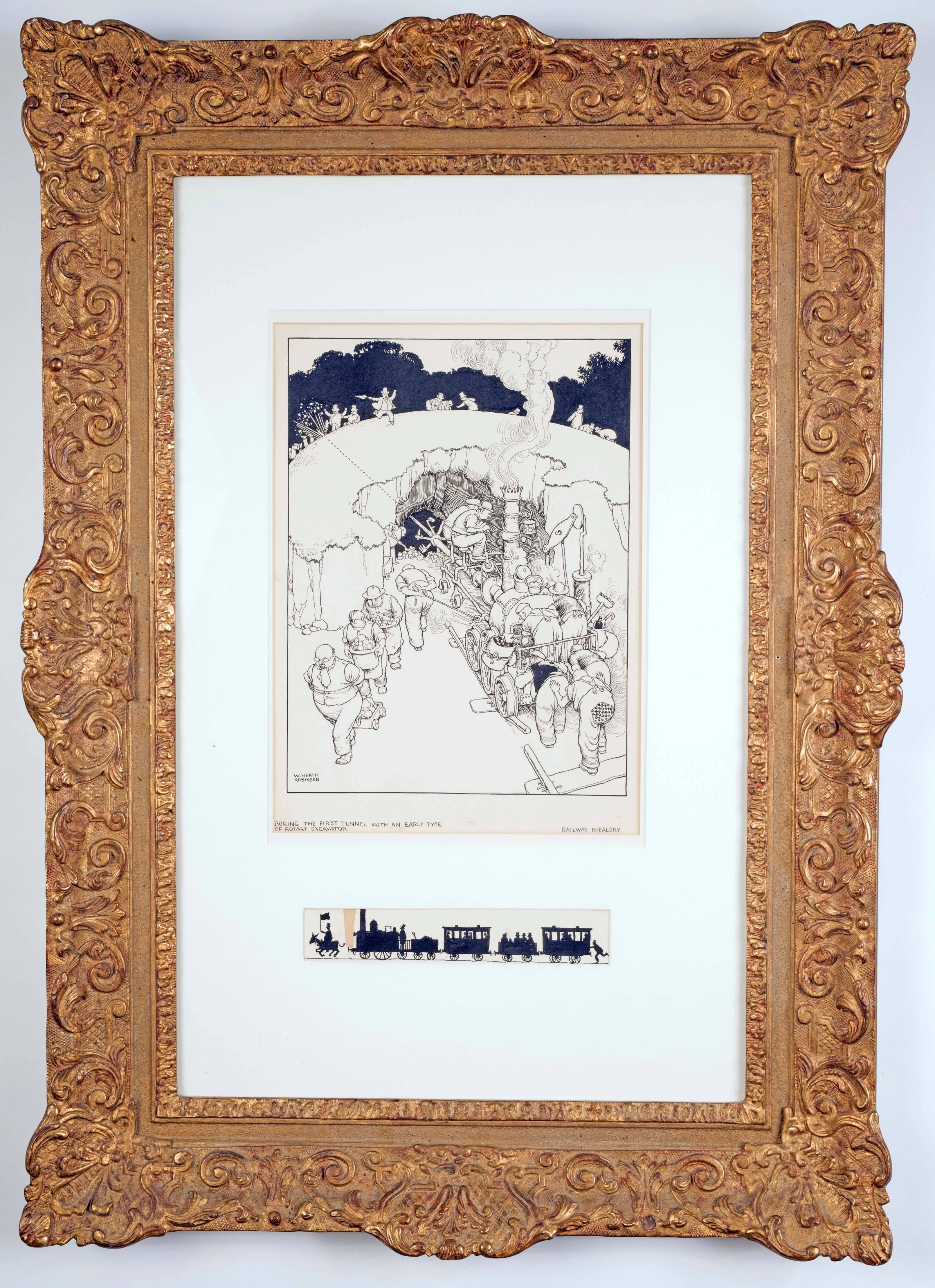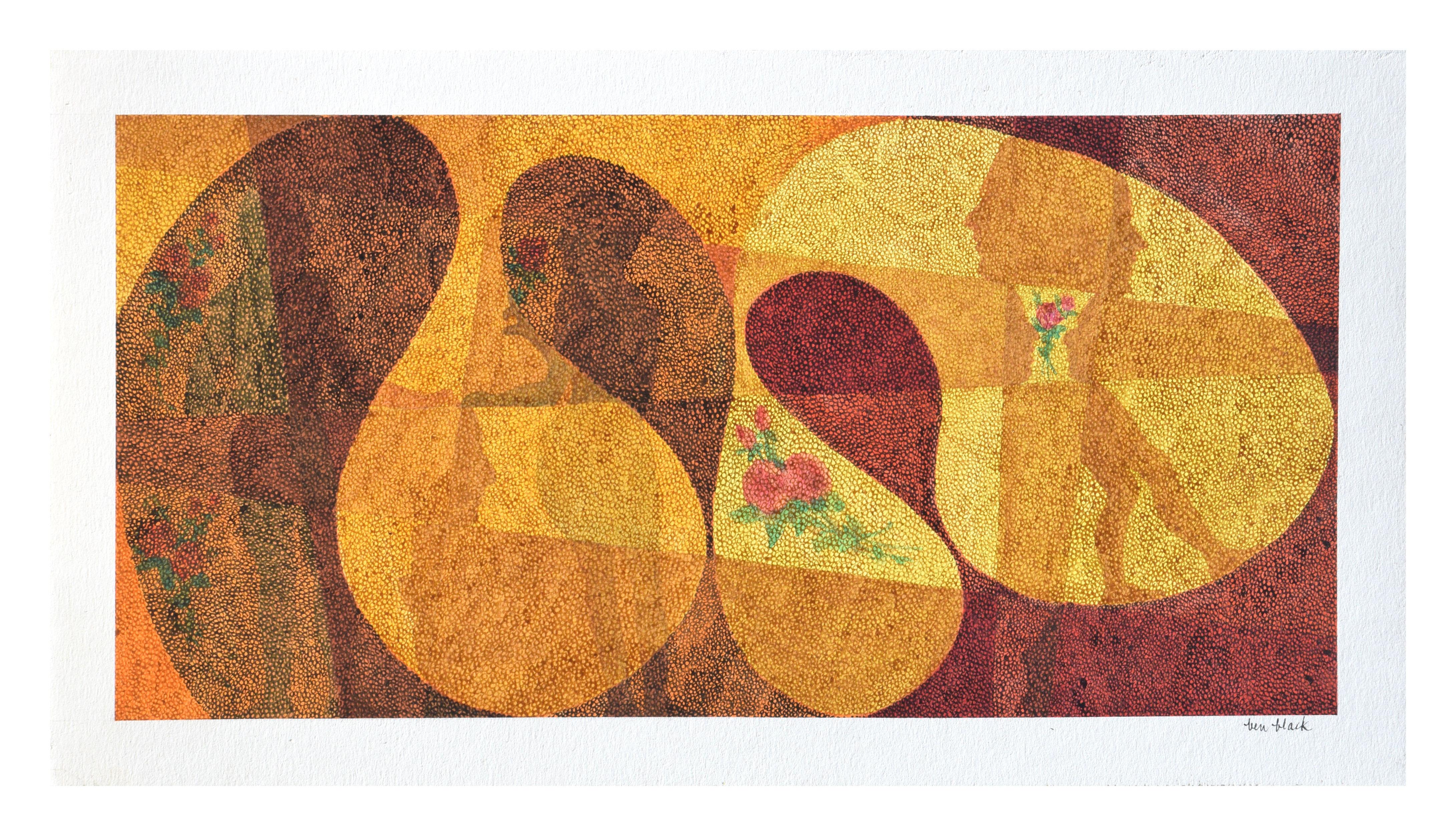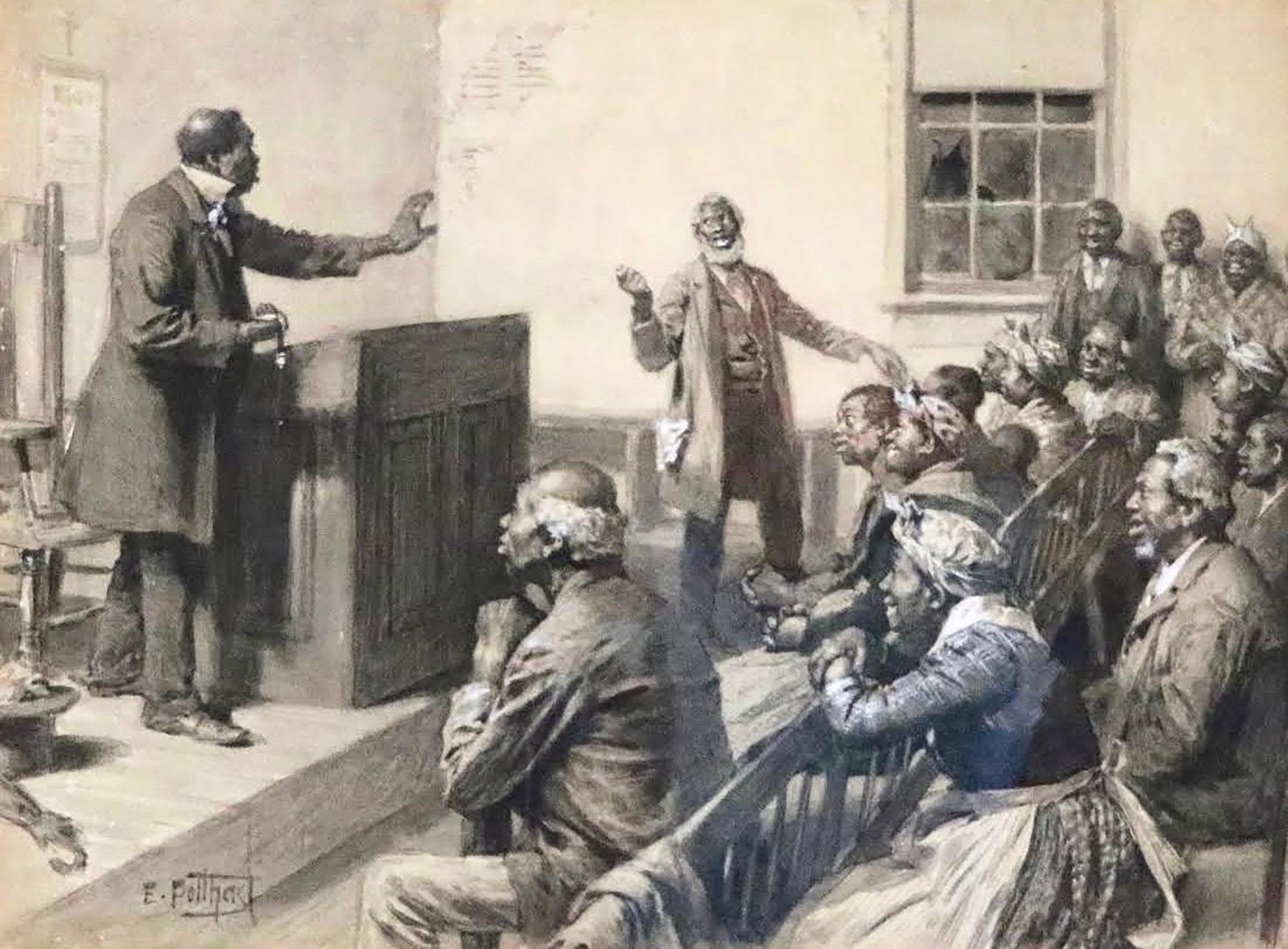Items Similar to "Figure Study" Rockwell Kent, American Modernism, Work on Paper
Want more images or videos?
Request additional images or videos from the seller
1 of 10
Rockwell Kent"Figure Study" Rockwell Kent, American Modernism, Work on Paper
About the Item
Rockwell Kent
Figure Study
Estate stamped lower right
Ink on paper
6 x 10 inches
Rockwell Kent, though best known as an artist and illustrator, pursued many careers throughout his long life, including architect, carpenter, explorer, writer, dairy farmer, and political activist. Born in Tarrytown, New York, Kent was interested in art from a young age. These ambitions were encouraged by his aunt Jo Holgate, an accomplished ceramicist. Jo came to live with the family after Kent’s father passed away in 1887 and took him to Europe as a teenager. Kent attended the Horace Mann School in New York City, where he excelled at mechanical drawing. His family’s financial circumstances prevented him from pursuing career in the fine arts, however, and after graduating from Horace Mann in 1900, Kent decided to study architecture at Columbia University.
Before matriculating at Columbia, Kent spent the first of three consecutive summers studying painting at William Merritt Chase’s art school in Shinnecock Hills, Long Island. There he found a community of mentors and fellow students who encouraged him to pursue his interest in art. At the end of Kent’s third summer at Shinnecock, Chase offered him a full scholarship to the New York School of Art, where he was a teacher. Kent began taking night classes at the art school in addition to his architecture studies, but soon left Columbia to study painting full time. In addition to Chase, Kent took classes with Robert Henri (American, 1865 - 1929) and Kenneth Hayes Miller (American, 1876 - 1952). His classmates included the artists George Bellows (American, 1882 - 1925) and Edward Hopper (American, 1882 - 1967).
Kent spent the summer of 1903 assisting the painter Abbott Handerson Thayer (American, 1849 - 1921) at his studio in Dublin, New Hampshire—a position he secured through the recommendation of his Aunt Jo. Thayer gave the young artist time to pursue his own work, and that summer Kent painted several views of the New Hampshire landscape, including Mount Monadnock. In 1905 Kent moved from New York to Monhegan Island in Maine, home to a summer art colony, where he continued to find inspiration in the natural world. Kent soon found success exhibiting and selling his paintings in New York and in 1907 was given his first solo show at Claussen Galleries. The following year he married his first wife, Kathleen Whiting (Thayer’s niece), with whom he had five children. The couple divorced in 1924, and Kent married Frances Lee the following year. They in turn divorced after 15 years of marriage, and the artist then married Sally Johnstone.
For the next several decades, Kent lived a peripatetic lifestyle, settling in several locations in Connecticut, Maine, and New York. During this time he took a number of extended voyages to remote, often ice-filled, corners of the globe, including Newfoundland, Alaska, Tierra del Fuego, and Greenland, to which he made three separate trips. For Kent, exploration and artistic production were twinned endeavors, and his travels to these rugged, rural locales provided inspiration for both his visual art and his writings. He developed a stark, realist landscape style in his paintings and drawings that revealed both nature’s harshness and its sublimity. Kent’s human figures, which appear sparingly in his work, often signify mythic themes, such as heroism, loneliness, and individualism. Important exhibitions of works from these travels include the Knoedler Gallery’s shows in 1919 and 1920, featuring Kent’s Alaska drawings and paintings, and the Art Institute of Chicago’s 1933 Paintings and Drawings of Greenland by Rockwell Kent. He wrote a number of illustrated memoirs about his adventures abroad, including Wilderness: A Journal of Quiet Adventure in Alaska (1920) and N by E (1930). His autobiography, It’s Me, O Lord, was published in 1955.
Around 1920 Kent took up wood engraving and quickly established himself as one of the preeminent graphic artists of his time. His striking illustrations for two editions of Herman Melville’s Moby Dick—simultaneously precise and abstract images that drew on his architect’s eye for spatial relations and his years of maritime adventures—proved extremely popular and remain some of his best-known works. Throughout the 1920s and 1930s, Kent produced a range of print media, including advertisements, bookplates, and Christmas cards. Kent’s satirical drawings, created under the pseudonym “Hogarth Jr.,” were published in popular periodicals including Vanity Fair, Harper’s Weekly, and Life. In 1937 the artist was commissioned by the Federal Public Works Administration to paint two murals for the New Post Office in Washington, DC.
By the onset of World War II, Kent had largely disengaged from the New York art world and instead focused his energies on a number of progressive political causes, including labor rights and preventing the spread of fascism in Europe. Though he never joined the communist party, his support of leftist causes made him a target of suspicion by the State Department, which revoked his passport after his first visit to Moscow in 1950 (though Kent successfully sued to have it reinstated). As his artistic reputation declined at home and his work fell out of favor, Kent found new popularity in the Soviet Union, where his works were exhibited frequently in the 1950s. In 1960 he donated 80 paintings and 800 prints and drawings to the people of the Soviet Union, and in 1967 he was awarded the Lenin Peace Prize. Kent died of a heart attack in 1971 and was buried on the grounds of Asgard, his farm in New York’s Adirondack Mountains.
- Creator:Rockwell Kent (1882-1971, American)
- Dimensions:Height: 17.5 in (44.45 cm)Width: 21.5 in (54.61 cm)
- Medium:
- Period:
- Condition:
- Gallery Location:New York, NY
- Reference Number:1stDibs: LU1841213937542
Rockwell Kent
Rockwell Kent, (1882-1971) was born in Plattsburgh, New York). As a painterand printmaker his work was captured scenes of nature and adventure with a sense of drama that made him one of the most popular American artists of the first half of the 20th century. Kent studied architecture at Columbia University but turned to painting and was a pupil of William M. Chase, Robert Henri, and Abbott Thayer. Best known as an artist and illustrator he worked as an architectural draftsman, as a lobsterman and carpenter on the coast of Maine, and as a ship’s carpenter. He explored the waters about Tierra del Fuego in a small boat and lived in Newfoundland, Alaska, and Greenland, drawing heavily upon these experiences for his paintings and travel books. Kent’s human figures, which appear sparingly in his work, often signify mythic themes, such as heroism, loneliness, and individualism.
About the Seller
5.0
Platinum Seller
These expertly vetted sellers are 1stDibs' most experienced sellers and are rated highest by our customers.
Established in 2021
1stDibs seller since 2022
63 sales on 1stDibs
Typical response time: <1 hour
- ShippingRetrieving quote...Ships From: New York, NY
- Return PolicyA return for this item may be initiated within 3 days of delivery.
More From This SellerView All
- "Pleased to See You, " Crash, Pop Art, Street Art GraffitiBy John Crash MatosLocated in New York, NYCrash Pleased to See You, 1989 Signed and dated lower left Watercolor and ink on paper 30 x 20 1/2 inches A contemporary of Keith Haring and a modern-day master of this present day ...Category
1980s Street Art Figurative Paintings
MaterialsInk, Watercolor, Paper
- "Medieval Thoughts, Prague, " Alphonse Mucha, Czech Art Nouveau IllustrationBy Alphonse MuchaLocated in New York, NYAlphonse Mucha (Czech, 1860 - 1939) Medieval Thoughts, circa 1890 Wash, ink, and watercolor on paper 11 x 9 inches Signed lower right Provenance: Phillips New York, 19th and 20th ce...Category
1890s Art Nouveau Figurative Drawings and Watercolors
MaterialsWatercolor, Ink, Paper
- "Untitled, " Crash, Pop Art, Street Art Graffiti, Figure with ClockBy John Crash MatosLocated in New York, NYCrash Untitled, 1989 Signed and dated lower left Watercolor and ink on paper 30 x 20 1/2 inches A contemporary of Keith Haring and a modern-day master of this present day art form o...Category
1980s Street Art Figurative Paintings
MaterialsPaper, Ink, Watercolor
- Out of the Sun (Under the Racetrack Grandstand), Saratoga Springs, Anne DiggoryBy Anne DiggoryLocated in New York, NYAnne Diggory (b. 1951) Out of the Sun (Under the Racetrack Grandstand), 1978 Watercolor on paper 7 x 10 inches Signed and dated lower left Provenance: Ac...Category
1970s Contemporary Landscape Drawings and Watercolors
MaterialsPaper, Watercolor, Pencil
- "Young Girl (Jenue Fille)" Louis Valtat, French DrawingBy Louis ValtatLocated in New York, NYLouis Valtat Young Girl Stamped with initials lower right Pencil on brown paper Sight 7 x 6 inches Provenance: Mrs. Ernest M. Werner, New York Private Collection, Rhode Island Loui...Category
Early 20th Century Fauvist Figurative Drawings and Watercolors
MaterialsPaper, Pencil
- "Reclining Figure" Walt Kuhn, Figurative Nude Line Drawing, American ModernismBy Walt KuhnLocated in New York, NYWalt Kuhn Reclining Figure, 1935 Signed and dated lower left Pen on paper Sight 11 x 15 inches Provenance: Kennedy Galleries, New York Spanierman Gallery, New York Private Collection, New York Exhibited: New York, Kennedy Galleries, Walt Kuhn, December 3 - 31, 1968, no. 71. Walter Kuhn...Category
1930s Modern Figurative Drawings and Watercolors
MaterialsPaper, Pen
You May Also Like
- Collier's Weekly Cover, Automobile NumberBy Edward PenfieldLocated in Fort Washington, PAMedium: Ink, Watercolor, Gouache on Paper laid to Paperboad Signature: Inscribed Collier's Cover Weekly/Sept. 1914/Belgian Automobile Troops/Fighting German Dragoons (on the reverse)...Category
1910s Figurative Drawings and Watercolors
MaterialsInk, Paper, Watercolor, Gouache
- Reclining Woman with Horseriders - Chinese American Art Watercolour InkBy Walasse TingLocated in London, GBWALASSE TING (1929-2010) [Ding Xiongquan] Wuxi 1929 – 2010 New York (Chinese/American) Title: Reclining Woman with Horseriders Technique: Stamp Signed Watercolour on Handmade Pape...Category
20th Century Figurative Drawings and Watercolors
MaterialsWatercolor, Ink, Handmade Paper
- William Heath Robinson original drawing, British early 20th CenturyBy William Heath RobinsonLocated in Petworth, West SussexWilliam Heath Robinson (British, 1872 - 1944) 'Boring The First Tunnel With An Early Type Of Rotary Excavator, And The Red Flag', circa 1935 (railway ribaldry was published in this year) The former signed 'W. Heath Robinson (lower left) and inscribed with title (lower left and right) The former to mount 14 X 10.1/4in. (35.5 X 26cm.) The latter 1.1/2 X 8.1/2in. (3.8 X 21.6 cm.) Literature: Railway Ribaldry, first published by the Great Western Railway, Paddington, 1935. William Heath Robinson was an English cartoonist and illustrator best known for drawings of ridiculously complicated machines for achieving simple objectives. During the First World War, he drew large numbers of cartoons, depicting ever-more unlikely secret weapons being used by the combatants. In the UK the term "Heath Robinson" entered popular language during this time as a description of any unnecessarily complex and implausible contrivance. Its continuing popularity was undoubtedly linked to Second World War Britain's shortages and the need to "make do and mend". In the course of his work, Robinson also wrote and illustrated three childrens books including The Adventures of Uncle Lubin (1902) which is regarded as the genesis of his depiction of unlikely machines. The inventions he drew were frequently powered by steam boilers or kettles, heated by candles or a spirit lamp and usually kept running by balding, bespectacled men in overalls. There would be complex pulley arrangements, threaded by lengths of knotted string. One of his most famous series of illustrations accompanied the first Professor Branestawm book written by Norman Hunter. The stories provided a perfect backdrop for Robinson's drawings. One of the automatic analysis machines built for Bletchley Park during the Second World War to assist in the decryption of German message traffic was named "Heath Robinson" in his honour. He died in September 1944 during the Second World War and is buried in East Finchley Cemetery. The Heath Robinson Museum in Pinner opened in October 2016 to house a collection of nearly 1,000 original artworks owned by The William Heath Robinson Trust. In the Wallace and Gromit...Category
20th Century Figurative Drawings and Watercolors
MaterialsInk, Paper, Pen
- Figures in Motion with Roses - Pointillist Figurative AbstractBy Ben BlackLocated in Soquel, CAHighly detailed india ink abstract pointillist drawing of figures and roses with watercolor and gouache by Ben Black (American, 1922-2003), c.1990's. Signed "Ben Black" lower right. ...Category
1990s Pointillist Abstract Drawings and Watercolors
MaterialsIndia Ink, Gouache, Paper, Watercolor
- Brother LazarusBy Edward Henry PotthastLocated in Fort Washington, PAMedium: Charcoal and Ink Wash on Paper Signature: Signed Lower Left Published in Century Magazine, July 1899 Vol 58, pg. 361. Article. "Brother Sims' Mistake". Title: "Brother Lazar...Category
1890s Figurative Drawings and Watercolors
MaterialsCharcoal, Paper, Ink
- "Hope" Ink On Paper 2010 FramedLocated in Carmel, CAAn original piece, one of a kind. Inspired by the theatre world, Devie had retained her own unique drawing strokes. Her works reflect an approachable other-worldliness. She paints a...Category
21st Century and Contemporary Modern Portrait Drawings and Watercolors
MaterialsHandmade Paper, Ink
Recently Viewed
View AllMore Ways To Browse
Study On Paper
Framed Work On Paper
Antique Paper Show
Figure Study Painting
Antique Style Paper
Architectural Drawing Study
1960 Early American
Modernism Paintings
Early American Figure
Figure Drawing Print
Used Kent
Antique Architectural Drawings
American Modernism
American Settle
Modernism Gallery
Antique Paper Stamp
Home Union
1930s Modernism
